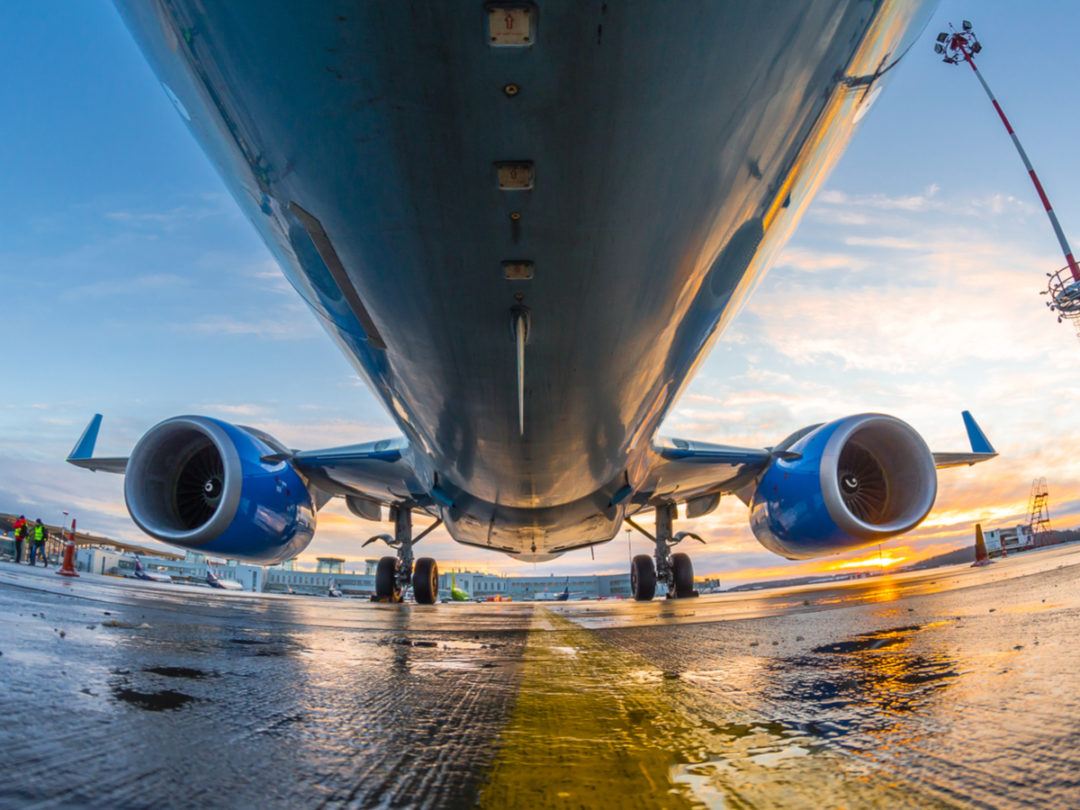
Visit Our Sponsors |
|
|
|
|
|
|
|
|
|
|
|
|
|
|
|
|
|
|
|
|
|
|
|
|
|
|
|
|
|
|
|
|
|
|
|
|
|
|

Boeing Co. has begun mapping out the steps to ease its 737 Max back into commercial service once regulators lift a global grounding for the company’s best-selling jetliner.
The planemaker has been planning the Max’s comeback with airlines in a series of meetings from Miami to Moscow, while placing carefully tailored plans in place for suppliers, Chief Executive Officer Dennis Muilenburg said Wednesday. He didn’t specify a timeline for the plane’s return, which will be determined by regulators.
“We see this as a defining moment for the Boeing Co.,’’ he told the Bernstein Strategic Decisions Conference. “It’s been a challenging few months.’’
Muilenburg is navigating one of the worst crises in Boeing’s 103-year history after regulators grounded the Max, the company’s largest source of profit, following two fatal accidents that killed 346 people. The tragedy has had the greatest impact of any incident in his 34-year career at the Chicago-based manufacturer, he said in a separate interview with CBS Evening News.
“I can tell you it affects me directly as a leader of this company. It’s very difficult,” Muilenburg said as he apologized to the crash victims’ families. “We can’t change what has happened in these accidents, but we can be absolutely resolute in what we’re going to do on safety going forward.”
Meanwhile, the head of a global airline group warned of discord among global regulators and cautioned that commercial flights for the Boeing narrow-body aren’t likely to resume for at least 10 to 12 weeks.
“We are preparing a meeting between regulators, the aircraft manufacturer and the operators to make an assessment of the situation,” Alexandre de Juniac, CEO of the International Air Transport Association, said on a call with reporters.
Boeing fell 1.7 percent to $348.80 at the close in New York amid broad market declines. That was the third-biggest drop on the 30-member Dow Jones Industrial Average.
‘Disciplined’ Comeback
Muilenburg described a “disciplined” schedule that would start with Boeing teams helping to take about 500 parked 737 jets out of storage. That total includes about 100 newly built planes that can’t be delivered until the grounding is lifted. They are stashed around the Seattle area and on a sprawling Boeing maintenance base in San Antonio. The planemaker has two other sites where it could park planes if needed, Muilenburg said.
Boeing doesn’t plan to increase the tempo at its main 737 factory, nor reinstate its financial forecast, until it’s clear that its supply-chain is healthy and moving in sync, Muilenburg said. Boeing suspended its outlook and share repurchases when regulators halted commercial flights in March.
Engine maker CFM International, in a break from its earlier struggles with delays, is starting to deliver turbofans on schedule, Muilenburg said. The joint venture of General Electric Co. and Safran SA is also feeding a pool of spare engines.
Boeing has been working to reassure travelers, pilots and regulators of its engineering prowess and commitment to safety after an obscure software system, called MCAS, was linked to two crashes. The company also faces a criminal probe, as well as civil inquiries from the U.S. Congress and the Securities and Exchange Commission, for its role in the accidents and close ties to federal regulators.
Separate Reviews
Boeing has largely completed work on redesigned software, but is still responding to a series of questions and answers from the Federal Aviation Administration and international regulators. Muilenburg said he was encouraged by the U.S. agency’s one-day summit last week on the steps required to return the grounded Boeing jetliner to service, including the need for additional pilot training.
But at least one regulator has reaffirmed plans to do a separate, in-depth review. The European Union Aviation Safety Agency plans to examine the 737 Max’s entire flight-control system, including the plane’s displays, alerts and air-data systems, as well as the aircraft’s autopilot function, EASA Director Patrick Ky wrote in a letter dated May 27.
“The regulators aren’t on the same page,” said De Juniac, the IATA chief. “Otherwise they’d have a similar timeline, a similar set of measures.”
Airlines, regulators and Boeing will meet in five to seven weeks to try and set a common schedule for returning the Max to service and restoring trust in the plane, De Juniac said. While the location has yet to be confirmed, IATA would like to see a single regulator making the call on airworthiness to avoid “useless complexity and additional costs,” he said.
IATA represents some 290 airlines, or more than 80 percent of total air traffic. The group will hold its annual meeting in Seoul this weekend, in the biggest gathering of airline and plane-company executives since the Boeing tragedies in October and March.
July Return?
The three U.S. operators of the Max have dropped the jet from their flight schedules through at least early August, in line with the timeframe cited by De Juniac. Meanwhile, SpiceJet Ltd. said Boeing representatives told it the 737 Max should be back in the air by July, signaling a quicker return for the plane.
“The timeline communicated to us based on their experience is July — end of June basically,” SpiceJet’s Chief Financial Officer Kiran Koteshwar said in an interview. “We are expecting it to be July.”
Representatives for Boeing in India didn’t comment.
RELATED CONTENT
RELATED VIDEOS
Timely, incisive articles delivered directly to your inbox.

